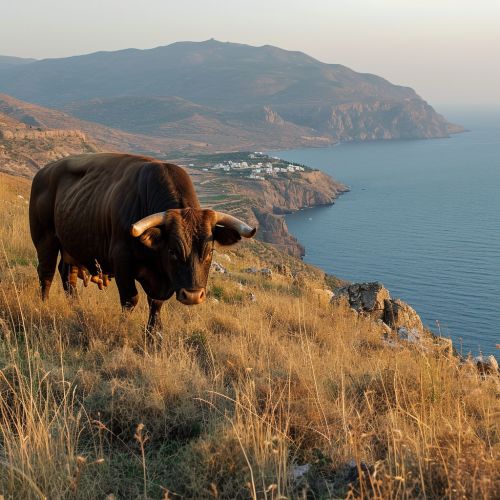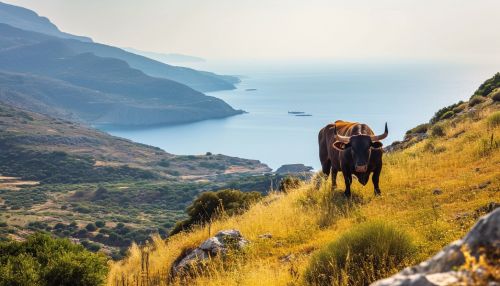Cretan Bull
Mythology
In Greek mythology, the Cretan Bull was a majestic and powerful creature that played a significant role in various myths and legends. It was associated with the island of Crete and was involved in the tales of Hercules and Theseus, among others.


Origin
The Cretan Bull's origin is tied to the myth of Poseidon, the god of the sea. According to the legend, Minos, the King of Crete, promised to sacrifice whatever animal emerged from the sea if Poseidon would help him secure his rule. Poseidon sent forth a magnificent bull, but Minos, taken by its beauty, decided to keep it and sacrificed another bull in its place. This act of defiance against the gods set the stage for the bull's role in later myths.
Labours of Hercules
The Cretan Bull appears in the myth of the Twelve Labours of Hercules. It was the seventh labour that Hercules was ordered to complete. He was tasked with capturing the bull and bringing it to Eurystheus, the king who had set the labours. Hercules managed to wrestle the bull into submission and returned it to Eurystheus, who later released it.
Role in the Theseus Myth
After its release by Eurystheus, the Cretan Bull wandered to Marathon, a region of Greece, where it caused havoc among the populace. This is where it encountered Theseus, the legendary hero of Athens. Theseus, on his way to becoming king, sought to prove his worth by confronting the bull. After a fierce battle, Theseus was able to subdue the bull, thus proving his bravery and strength.
Symbolism
In ancient Greek culture, the Cretan Bull held significant symbolic value. It was often associated with the power and authority of the king, as seen in the myth of Minos. Its strength and ferocity made it a fitting challenge for heroes like Hercules and Theseus, symbolizing the overcoming of formidable obstacles. Furthermore, its connection to Poseidon linked it to the sea, a crucial element in the maritime culture of the Greeks.
In Art and Literature
The Cretan Bull has been depicted in various forms of art and literature throughout history. In ancient Greek pottery, it is often shown in scenes from the myths of Hercules and Theseus. In literature, it features in the works of classical authors like Ovid and Apollodorus, who recount its myths in their writings. The bull continues to be a popular subject in modern interpretations of Greek mythology.
